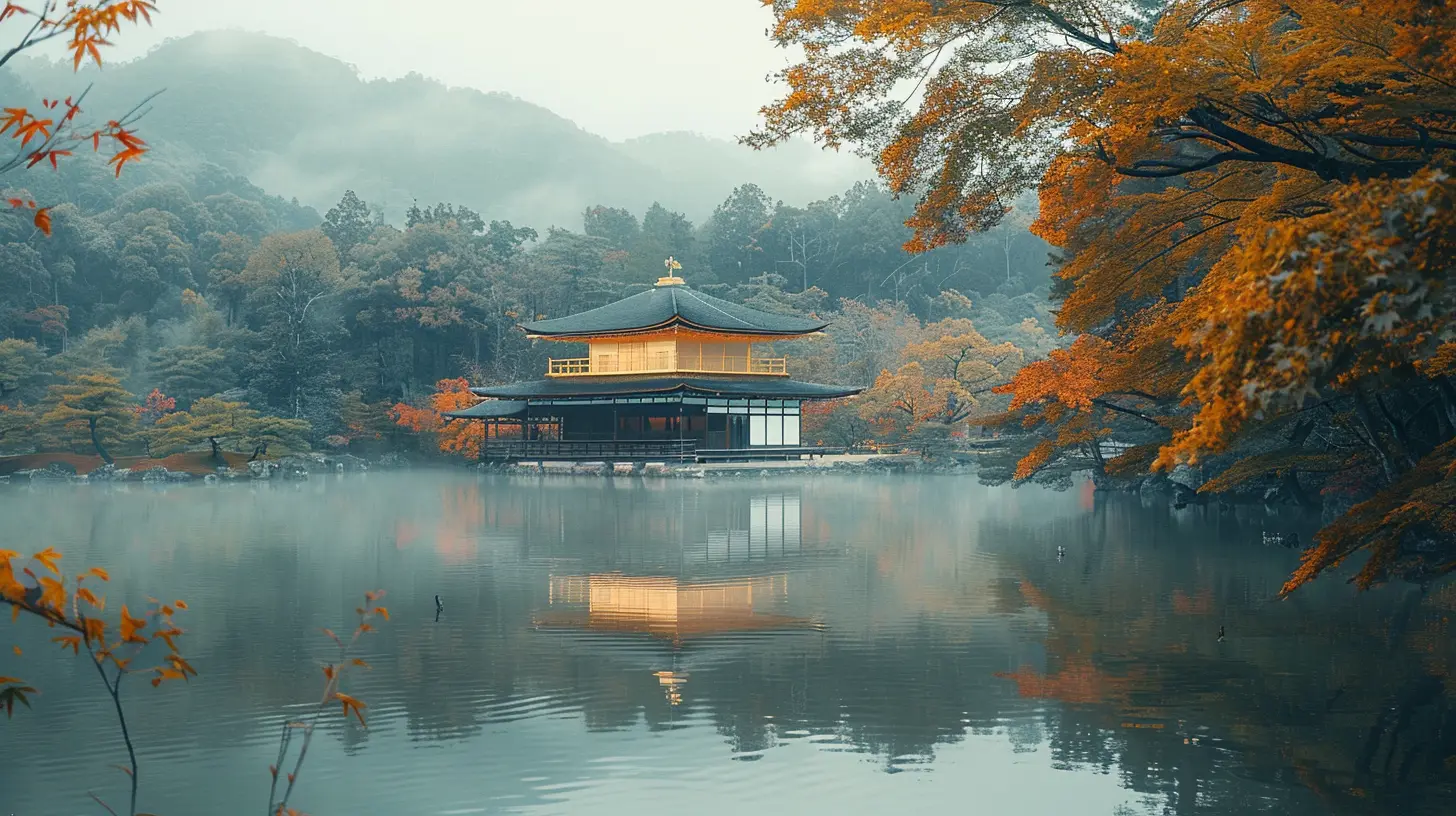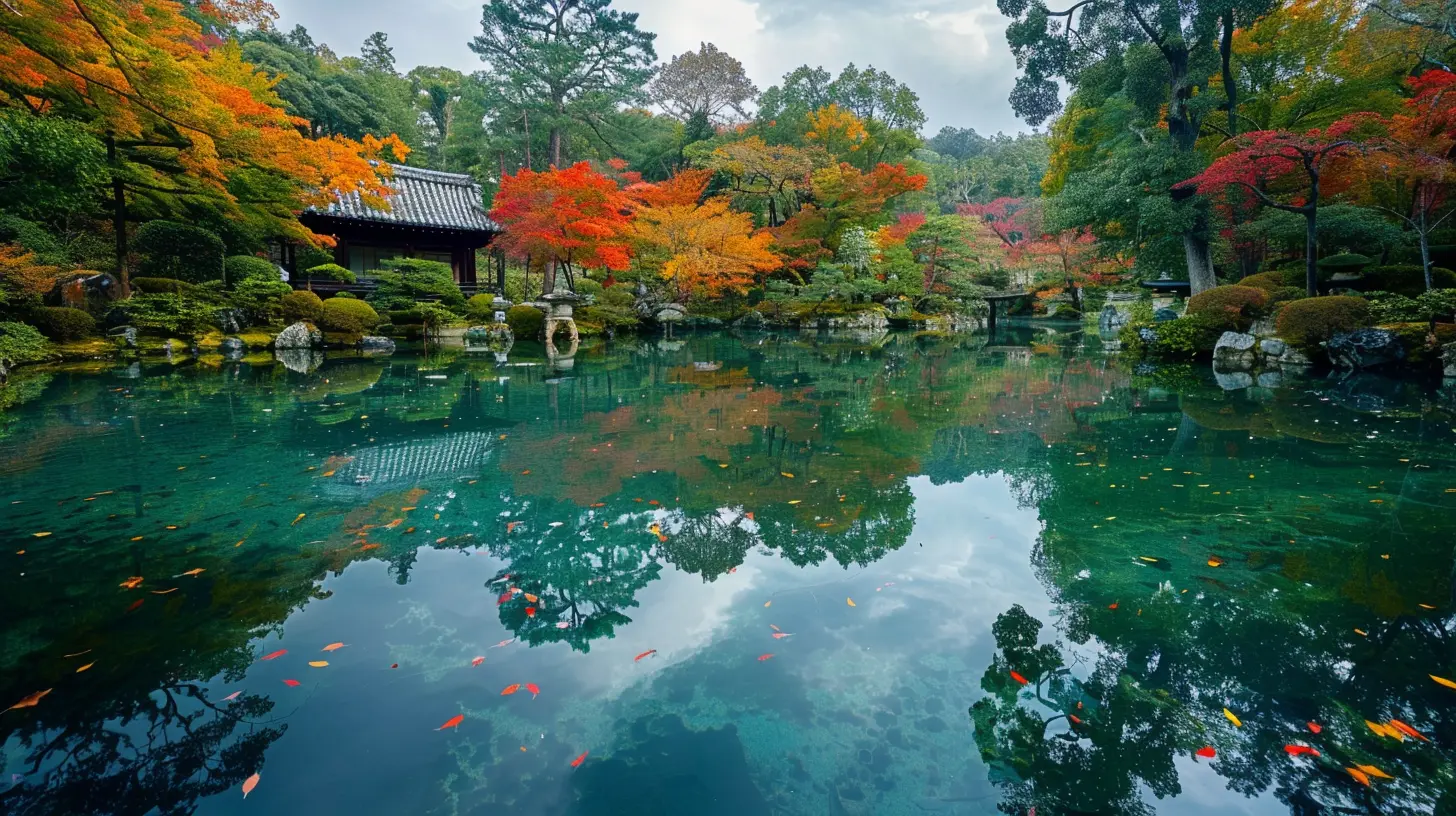The Tranquil Beauty of Kyoto's Golden Pavilion
24 September 2025
Kyoto, the heart of Japan’s ancient traditions, has a way of making visitors feel like they've stepped into a living painting. Among its many treasures, Kinkaku-ji, or the Golden Pavilion, stands out as a masterpiece of serenity and breathtaking beauty. Imagine a golden temple shimmering under the sunlight, perfectly reflected in a still pond—sounds like something out of a dream, doesn’t it?
In this article, let’s take a peaceful stroll through the history, significance, and sheer magic of Kyoto’s Golden Pavilion. 
A Glimpse into History
Kyoto is a city that wears its centuries-old heritage like a badge of honor, and Kinkaku-ji is no exception. Originally built in 1397 as a retirement villa for Shogun Ashikaga Yoshimitsu, the temple was later transformed into a Zen Buddhist temple after his passing. Despite experiencing devastation—including being burned down in 1950—the pavilion was meticulously rebuilt to match its former glory.Today, its gleaming gold leaf exterior is a testament to both its history and the Japanese commitment to preservation. But it’s more than an architectural wonder—it’s a symbol of peace, faith, and the fleeting nature of beauty, much like the cherry blossoms that bloom across Japan every spring. 
The Golden Glow: A Sight to Remember
Now, let’s talk about what truly makes Kinkaku-ji a sight to behold—the gold leaf-covered exterior. The top two floors of the pavilion are completely adorned in gold, making it one of the most visually striking landmarks in Japan. As the sun moves across the sky, the reflection of the golden structure in the surrounding Kyoko-chi (Mirror Pond) creates an almost otherworldly scene.It’s no wonder countless poets, artists, and photographers have tried (and often failed) to fully capture its beauty. But there’s something intangible about seeing it in person—the way the rippling water adds an almost hypnotic charm, the way the golden glow shifts with the daylight, and the way the surrounding trees frame it like a perfectly composed painting.
Ever felt like time slowed down for just a moment? That’s exactly how it feels to stand before Kinkaku-ji. 
Symbolism Behind the Layers
Beyond its stunning exterior, Kinkaku-ji is a deeply symbolic structure, reflecting different architectural styles across its three floors:- The First Floor: The Chamber of Dharma Waters
The base level remains unadorned with gold, showcasing a Shinden-zukuri (palace-style) design. Made of natural wood and white plaster, it represents the Heian aristocratic style—simple, grounded, and elegant.
- The Second Floor: The Tower of Sound Waves
Mimicking samurai residences, this floor brings in elements of Bukke-style architecture. Coated in gold leaf, it symbolizes power, sophistication, and the warrior’s path.
- The Third Floor: The Cupola of Ultimate Wisdom
Designed in a Zen temple style, this fully gold-leaf-coated level represents enlightenment and spirituality. At its peak, a golden phoenix sits atop, symbolizing rebirth and eternity.
Each layer tells a story, merging Japan’s aristocratic, warrior, and spiritual traditions into one breathtaking structure. 
A Walk Through the Garden of Tranquility
A visit to Kinkaku-ji isn’t just about the temple itself—the surrounding garden is just as enchanting. The Muromachi-style landscape is designed to create a sense of fluidity, blurring the line between reality and art. Every turn along the path reveals a new perspective of the Golden Pavilion, as if it’s leading you through a carefully crafted story.You’ll spot miniature islands in Kyoko-chi, symbolizing paradise, and carefully placed rocks said to enhance the temple's harmony with nature. There’s even a small waterfall, Ryumon-baku, meant to resemble a carp leaping towards the heavens—a nod to perseverance and ambition in Japanese folklore.
Take a deep breath while walking through this garden, and for a moment, let go of the chaos of everyday life. Here, peace isn’t just found—it surrounds you.
Best Time to Visit Kinkaku-ji
Much like the different flavors of Kyoto throughout the year, Kinkaku-ji transforms with the seasons.- Spring (March - May): Cherry blossoms add a soft pink contrast to the golden shimmer. It's a romantic and breathtaking sight, but also one of the busiest seasons.
- Summer (June - August): Lush greenery envelopes the temple, making it feel even more serene. The golden hue shines brilliantly under the bright summer sun.
- Autumn (September - November): Fiery red and orange maple leaves turn the entire scene into a real-life painting. This is arguably one of the best times to visit.
- Winter (December - February): If you’re lucky, you’ll see Kinkaku-ji dusted with fresh snow—a rare but magical sight that makes the temple look like it’s straight out of a fairytale.
Regardless of when you visit, the Golden Pavilion never loses its ability to take your breath away.
Tips for an Unforgettable Visit
If you're planning your trip to Kinkaku-ji, here are some handy tips to make the most out of your experience:✔ Arrive early or late in the afternoon – To avoid crowds, visit early in the morning or just before closing. Kyoto’s major attractions get busy, and this one is no exception.
✔ Respect the temple grounds – Kinkaku-ji is a sacred place, so be mindful of your surroundings. Photography is allowed, but entering the temple itself is not.
✔ Take your time – The temple grounds are designed for relaxation and contemplation. Rather than rushing through, slow down and soak it all in.
✔ Pair it with another Kyoto gem – After your visit, consider stopping by Ryoan-ji, another Zen temple just a short walk away, famous for its rock garden.
✔ Enjoy matcha at the tea garden – Just before exiting, you’ll find a traditional tea house where you can sip on a warm bowl of matcha while savoring the tranquil atmosphere.
Why Kinkaku-ji is More Than Just a Temple
Kyoto’s Golden Pavilion is more than just a picturesque landmark; it’s a reminder of impermanence and the pursuit of beauty. In many ways, it mirrors life—brilliant, fleeting, and ever-changing with the passing seasons.Whether you're a history lover, a photography enthusiast, or simply someone seeking a moment of peace, Kinkaku-ji offers something for everyone. It’s a place where time slows down, where nature and architecture exist in perfect harmony, and where, just for a moment, everything feels right in the world.
And isn’t that what travel is really about?
all images in this post were generated using AI tools
Category:
Must See LandmarksAuthor:

Tracie McAdams
Discussion
rate this article
1 comments
Miranda McNab
Thank you for beautifully capturing the essence of Kyoto’s Golden Pavilion. Your vivid descriptions reminded me of its serene charm and the peaceful atmosphere that truly makes it a must-visit destination. I can't wait to experience it again!
September 27, 2025 at 2:52 AM

Tracie McAdams
Thank you so much for your kind words! I'm thrilled to hear that my descriptions resonated with you and captured the essence of the Golden Pavilion. It truly is a magical place!


